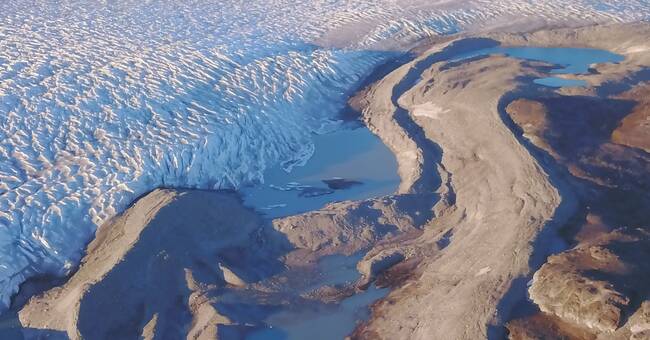The ice in Greenland is melting so fast that it is expected to set records over the next 100 years, according to a new study published in the journal Nature.
"Even if we succeed in achieving zero carbon dioxide emissions by the year 2100, Greenland will have lost more ice. This century is a different century in the last 12,000 years," says Jason Briner, professor of geology at the University of Buffalo in the USA, and lead author. to the study.
Different scenarios
But exactly how big the meltdown will be depends on how much carbon dioxide we will continue to emit in the future.
Between 8,000 to 36,000 billion tons of ice could melt in the coming century depending on different emission scenarios.
One billion tons of ice is about as much as if the entire Central Park in New York were a tall skyscraper and that cube was filled with frozen water, according to a simulation from NASA.
Regardless of the emission scenario, the enormous amounts of fresh water are expected to contribute to the global sea level rise and may also affect the strength of the Gulf Stream in the North Atlantic.
Can be more
- I think that the mass loss can be even higher than calculated in the study, because it focuses on the southwestern part of the Greenland ice sheet where the ice edge today is mostly on land, says Nina Kirchner, glaciologist at Stockholm University.
The parts where the ice sheet empties into fjords and comes into contact with water can melt faster, but more research is needed to confirm this.
Two major glacier shrimp collapses have occurred in the Greenland area this year, Milne and Spalte, which is a floating glacier and a fjord glacier.
- These glacier collapses are a sign that things are probably going faster than we think and more detailed research from these areas is needed, says Kirchner.
127 million swimming pools - per year
According to a study from Nasa earlier this year, it could be seen that approximately 200 billion tonnes of ice disappear from Greenland every year.
That's about as much as filling 127 million Olympic swimming pools.

